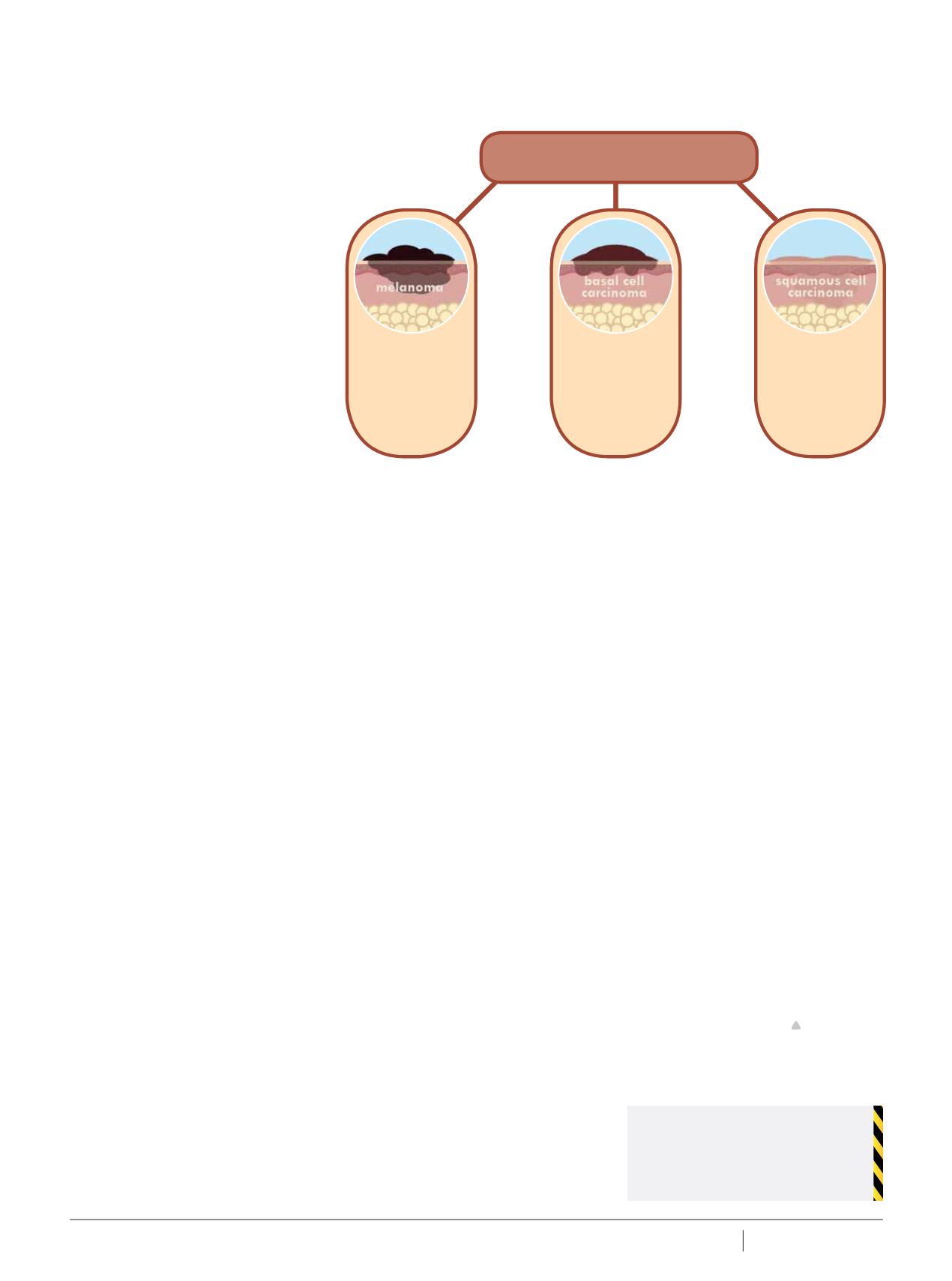

Summer 2017 ACROSS THE TRADES
1 0 3
For tradies who are working outdoors
for extended periods of time or near
reflective surfaces, such as plumbers,
electricians and builders, this could
potentially have big implications on
their health and safety.
Outdoor workers already have a
higher than average risk of the two
most common types of skin cancer,
basal cell carcinoma and squamous
cell carcinoma, which resulted in $63
million worth of workers’ compensation
claims being made for sun-related injury
or disease between 2000 and 2012,
according to Safe Work Australia.
Chris says it’s important to remember
though that sun protection does not just
involve sunscreen.
“Clothing, hats, sunglasses, providing
shade, the timing of outside work and
avoiding the middle of the day are
critically important in sun protection
but these are the things people often
overlook. People think sunscreen is all
they need but these other things are
equally, if not more, important.”
While employees do have a
responsibility to take care of their own
health and safety, state and territory
Workplace Health and Safety (WHS)
legislation requires employers to take
steps to reduce workplace hazards,
including ultraviolet (UV) exposure.
A Work Safe Australia spokesperson
says the organisation has developed
model WHA laws, which have been
adopted in all jurisdictions except
Western Australia and Victoria.
Under this model WHS Act, employers
are required to provide and maintain,
as far as reasonably practical, safe
working environments that do not pose
a risk to employee health.
“This duty requires business owners
to manage health and safety risks by
eliminating them as far as reasonably
practical and, if not reasonably
practical, by minimising those risks so
far as is reasonably practical,” says the
Work Safe Australia spokesperson.
Work Safe Australia says managing
the risks of exposure to UV radiation
(UVR) for outdoor workers should be
done as part of a risk assessment and
management process. This includes
identifying hazards, assessing risks
if necessary, controlling risks and
reviewing control measures to ensure
they are working as planned.
“Duty holders should keep in mind
that some control measures are
more effective than others. The most
effective control measure is eliminating
the risk, then substitution and finally
minimising the remaining risk,” says the
Work Safe Australia spokesperson.
For employers of outdoor workers
the most effective
control measures
are therefore
timing outdoor
work when the risk
of UVR exposure
is lowest, such as
early morning or late
afternoon, installing
sun shades and
rotating jobs and
various tasks.
“Personal Protective Equipment (PPE),
such as sun protective work clothing,
sun protective hats, sunglasses and
sunscreen, are the least effective
way of controlling and reducing the
risk of solar UVR,” says the Work Safe
Australia spokesperson.
“They should only be considered when
other, higher order control measures
are not reasonably practicable or to
increase protection from the hazard.
PPE should then be chosen carefully,
with consideration to when it is used
and the type of work being performed.”
Sun protection policies implemented
within the framework of WHS
legislation should take a proactive,
risk management approach to
protecting employees from UVR
exposure and include education and
training on sun protection.
Failure to do so leaves employers
open to legal action if skin cancer can
be attributed to the workplace and also
affects worker productivity.
According to the 2016 Skin Health
Australia Report
Card (SHARC) by
the Skin and Cancer
Foundation, 4% of
respondents said
skin health has
prevented them from
working or studying
in the previous week
to the survey. The
report also found
that 11% of Australians, or two million
people, missed work in the past 12
months due to a skin condition.
Sun protection is therefore an
important occupational health and
safety (OH&S) issue that employers can’t
afford to ignore, either from a safety or
profitability perspective.
The Australasian College of
Dermatologists
www.dermcoll.edu.auWork Safe Australia
www.safeworkaustralia.gov.auOutdoor workers
already have a higher
than average risk of
the two most common
types of skin cancer.
SKIN CANCER TYPES
Affects body parts
which are fequently
exposed to the sun.
Though it is a rare
case. It is a very
serious cancer and
is likely to spread in
other organs.
This is the most
common type of
non-melanoma skin
cancer. It typically
appears as a white,
waxy lump or a
brown, scaly patch.
This cancer occurs
mainly in Caucasians.
It starts from cells in
the outermost layer
of the skin which start
to overgrow and
potentially spread.
















